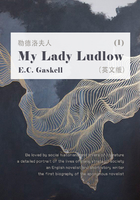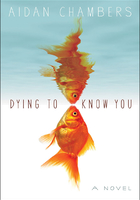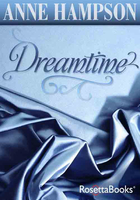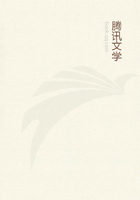In My Beginning Is My End
We shall not cease from exploration
And the end of all our exploring
Will be to arrive where we started
And know the place for the first time.
T. S. Eliot-"Little Gidding" (1942)
Lake Como. Spring 2008. April. Eliot's cruellest month. Twilight falling. From the shore, the lights of Brunate in the distance are just beginning to flicker into life. Shadows lengthen in the gardens of the Villa d'Este.
Everywhere the soothing influence of the pleasure principle is clearly in evidence. Despite all the beauties that nature provides in Lombardy without any human intervention, there is very little here that has escaped the improving hands of painters, architects, gardeners and sculptors.
With names that sound like expensive puddings, luxurious retreats line the shores-Villa Carlotta, Villa del Balbianello, Villa Melzi, Villa Serbelloni. The lake has entranced the cream of European aristocratic and cultural circles for two millennia, from Pliny to George IV to Stendhal and Liszt. The Villa d'Este at Cernobbio, commissioned in the sixteenth century by Cardinal Tolomeo Galli, is now a luxury hotel. Under vaulted ceilings, past statues of sleeping nymphs and over gravelled paths, the guests come and go. If the story of humankind is how far we have come from the freezing cave and the daily chase, then here at least it is easy to forget that either ever existed.
Why am I here? Another seminar on commerce and finance: another of those Davos-like gatherings that bring together the usual suspects-politicians, financiers and economists-to discuss the state of the world. Champagne and discretion. The rainmakers of global capitalism can wander among the azaleas, camellias, oleanders, rhododendrons, hydrangeas, roses and jasmine bushes, and confide their fears and hopes to each other. It is a time of retreat, and a time to share. A place to relax, to take stock, perhaps to plan, perhaps to deal.
This year, more so than anyone can remember, the mood is bleak. The rumble of approaching economic thunder is the basso continuo of all discussions. Over ten years of growth and untrammelled consumer expansion may be coming to an end.
Nobody should be surprised. All over the world the economic news has been foreboding.
A new double-barrelled word has entered the conversation, spreading fear like a sort of plague. This word is "subprime." Two years ago, most members of the public had never heard of it. At the Villa d'Este it is on everyone's lips. Already several hundred billion dollars have been written off by financial institutions as a result of mortgage-payment defaults and huge write-downs of mortgage-backed asset values. The figure is to get much larger. US banks have just reported the worst quarterly performance since 1990. Banks in the US, the UK and Germany have had to be rescued from collapse and have lost their independence. And much more is to come.
The scale of the unfolding crisis is alarming. The International Monetary Fund has delivered one of its gloomiest forecasts ever. It says bluntly that the troubles that erupted into the open in August 2007 now look like they are developing into the largest financial shock to the system for decades. It predicts that the liquidity squeeze will lead to a full-blown credit crunch in the advanced economies. It predicts recession in the US later in the year, and only slow recovery thereafter. It says that weakening growth in advanced economies will have knock-on effects on the large emerging economies, particularly in Asia and Latin America. It concludes that the heady growth rates that the world has come to take for granted are-at least for the time being-a thing of the past.
Worrying, too, is the parlous state of consumer confidence. There is wide agreement that the housing sector is in serious decline in several advanced economies. After many years of rapid price increases, with all the confident investment and spending that result, real investment in housing is now falling in countries as diverse as the United States, Britain, Australia, Spain and Ireland. The US Commerce Department has just released figures showing that the number of new houses remaining unsold in the US is now at its highest level in a quarter of a century.
At the same time there are increasing fears of inflation, for the price of oil is soaring. Consumption is forecast to increase relentlessly by 1.2 million barrels a day this year, to a new record of 87.2 million barrels a day. Prices are at record levels-flirting with $120 a barrel-and yet supply is not rising. In the US, experts are predicting a rise to over $4 a gallon at the gasoline pump by the end of the summer and, according to one, $7 a gallon in the next four years. More worrying still is the apparent paralysis of supply in the non-OPEC countries, such as Russia, Norway and Mexico. Strikes by oil workers in Nigeria have shut down around 1.7 percent of the world's production. How will all this end?
And there is an even worse spectre abroad: food prices. The United Nations Food Agency is warning that, across the world, escalating food prices threaten to force 100 million people to go hungry. Analysts are predicting that the days of relatively cheap food are over. Rice prices have already nearly tripled in a year. Wheat and vegetable oil are due to continue their steady rise. In poor countries there are food riots. More are predicted. Even in rich countries the effects are noticeable. In Britain, the Times devotes an entire front page to the report that food price inflation has pushed up the average weekly UK shopping bill by 15 percent in a year-not life-threatening, but quite enough to sour the mood of any electorate.
In this mountainous corner of European civilization, this showcase of some of humanity's finest artifacts, we are feeling the first tremors of an economic earthquake. No one is going so far as to say that the walls of the citadel will come tumbling down. However, no one is going to guarantee its perpetual stability with quite as much confidence as they might have done just a year earlier.
And it is not only the actors of the financial world who are affected. Shocks to the global financial system will eventually affect us all, from suburban families in America to small businesses in China, to Greek shipowners and to Russian oligarchs.
Somewhere deep down, the question gnaws away: If, with all the technology and sophistication at our disposal, the basic structure of the world economy is built upon sand, not rock, then what is the justification for all our labours? For all of us who work directly or tangentially in the financial system, how can everything we relied on be so swiftly under threat?
Milan. The world capital of pizzazz. The Piazza del Duomo. The same spring 2008. The same April. Midday. All the life of the city seems to gather here, along with many of Lombardy's pigeons. Palatial nineteenth-century buildings flank two sides of the spacious square. Giuseppe Mengoni's soaring 30-metre high shopping arcade, the Galleria Vittorio Emanuele, a cathedral of commerce that has become home to Gucci, Prada, Louis Vuitton and other minor divinities popular in Italy, emerges on to the square through a triumphal archway. In the midst of the piazza is a statue on horseback of Vittorio himself, Italy's boisterous first king. Underground, though, are the foundations of the fourth-century Basilica di Santa Tecla, where St. Augustine had been baptized sixteen hundred years before. And then, drawing all eyes and dominating the space as powerfully as if it were a vision of paradise, the breathtaking architectural masterpiece of Milan's duomo, an extraordinary tracery of stone and glass rising majestically through the spring sunshine.
Good journalist that he was, Mark Twain noted his first impression: "What a wonder it is! So grand, so solemn, so vast! And yet so delicate, so airy, so graceful! A very world of solid weight, and yet it seems…a delusion of frostwork that might vanish with a breath."
I have left the Villa d'Este a few hours early to pay homage to one of the largest and most beautiful churches in the world. Immediately the contrast strikes deep. I have come from a place of luxury and calm, albeit threatened and undermined by the distant drumbeat of impending economic instability. And I have arrived in the heart of a modern Italian city, nearly 4 million people living amid a tangle of medieval streets, nineteenth-century confidence and twentieth-century functionalism, vibrant, volatile and vivid, the very embodiment of energetic instability, yet where the main symbol is a building of such ethereal transcendence that it makes the present economic and financial disturbances seem like nothing more significant than duck down floating on the tide of history.
All the more remarkable, then, to ponder the conditions out of which this monument arose. Few would dispute that the latter decades of the fourteenth century were some of the darkest, most unstable years in Europe's history. When the then archbishop of Milan, Antonio da Saluzzo, began work on the duomo in 1386, Europe was going through one of its most dangerous phases. The Little Ice Age and, even more dramatically, the bubonic plague had laid waste to the intellectual and agricultural progress of thirteenth-century Europe, spreading starvation, disease and despair throughout the continent. In the countryside, marauding and desperate gangs searched frantically for food and shelter.
During the middle years of the fourteenth century the Black Death spread rapidly through France, Spain and Italy, and then crossed the channel into England. In some areas mortality was as high as 90 percent. The first wave of plague swept through Europe between 1347 and 1350, and in the next fifty years there were six further waves. By 1400 most estimates agree that the population of Europe had probably been cut by at least a third. Life has rarely fitted Hobbes's famous description so closely: "solitary, poor, nasty, brutish, and short."
Alongside this boiled other troubles. The Hundred Years War plunged much of France into turmoil until 1453; the only cohesive social force in the continent, the Roman Catholic Church, was seething with corruption; there were rival popes in Rome and Avignon; anti-Semitism was rife; and there were regular hysterical outbursts of violent witch-hunting in order to try to root out the supposed causes of all this distress. To imagine a building project such as Milan Cathedral being launched against a backcloth of such turbulence is extraordinary to say the least.
Nor was it just the beginnings of the project that were battered by the storms of history. Officially the cathedral was not completed until 1965. In the intervening 579 years since the first stone was laid, embellishment and renovation continued through upheavals and cataclysms as powerful as any in the world. The very conditions that made Milan prosper-its strategic significance in one of Europe's richest and most fertile regions, its geographical position at the head of Italy near the gateway through the Alps, and its rapidly increasing artistic treasure trove-made it the object of many an aggressor's attentions. And yet, as invaders battled on the Lombardy plains and new rulers passed through the royal and religious palaces, the cathedral endured.
Not that this was a straightforward case of the spiritual world triumphant amid the storms of human history. This building was always the result of mixed motives, with the human yearning for God and for Mammon (and the human lust for power) in the tight and tangled embrace that we have always known. Yes, the cathedral was built to the glory of God and for the edification of the faithful. But it was also built to establish the political dominance of Milan and its ruling families over the surrounding dynasties.
In Milan's endless struggle with the neighbouring cities of Bergamo, Novara, Cremona, Como and Lodi, the cathedral became an increasingly important symbol. Milan's regional hegemony was in the end undefeated, but then broader European struggles enveloped the city. In the early sixteenth century northern Italy became a battleground between the Spanish and French. In 1535 Lombardy became a Spanish colony, and for 170 years Milan became the neglected capital of a distant provincial outpost.
In the early eighteenth century the Austrian Habsburg Empire took control of the area and revolutionized Milan's economic, cultural and administrative structures. Napoleon invaded triumphantly in May 1796, but even before his death Lombardy was returned to Austrian hands by the Congress of Vienna of 1814–15. The Milanese agitated constantly against their Austrian rulers, but it wasn't until 1859 that they managed to oust their occupiers and become part of the Kingdom of Piedmont, which two years later evolved into the Kingdom of Italy. The Fascist Party was founded in Milan in 1919, and it was from there three years later that Mussolini started his March on Rome. It was in Milan that Mussolini, his mistress and fifteen leading Fascists were hung upside down from the Esso station in the Piazzale Loreto on 29 April 1945. During the later stages of the war, British and US bombers had targeted the city heavily but amid the destruction, the cathedral and its priceless contents were virtually unharmed. Today, it stands there still as the symbol of…what?
From across the square it looks like a forest in stone. Pinnacles sprout from every column. More than 3,500 statues crowd the exterior walls. The roof is crowned with a mass of spires and gargoyles. At the main west entrance, the doors swarm with marble, low-relief sculptures of birds, insects, fruits and animals so vivid as to seem alive.
Once inside, a coolness and a calm descend. Deep shadows are everywhere, and the darkness is deepest at the centre, under the spire, where a huge crucifix hangs in the gloom. Cutting through the darkness are shafts of light, prismatic and even ethereal. The eye travels through the shade and around the columns, across the intricate stonework, and along the sweeping high-beamed roof, but it is always drawn ineluctably to the light, to the great stained-glass windows at the east end, often repaired but still bearing much of the same design that was put there in the fourteenth century, and much of the same glass.
And as the glittering Milanese spring sun streams through the glass into the perpetual twilight of the interior, we are drawn to the image of the sun that sits in the centre of the pattern-a deeply ambiguous image representing at once the eternal ideal of the light of God's truth and at the same time the very temporal might of the Visconti family, who paid for the window and whose family emblem was the sun.
No cathedral is more overtly an emphatic statement of political power than Milan's. But there is also no mistaking the mysterious directions in which it points-inward to an inner darkness, and outward to the brightest of light.
Oxford, 1968. The middle year of three spent studying politics, philosophy and economics-the year when you didn't have to work for exams, either your prelims or your finals. A year when it really did feel as though Oswald Spengler's decline of the West had begun. It was the year of the murder of Robert Kennedy (he who had quoted George Bernard Shaw's "Some look at things that are and ask why? I dream of things that never were and ask why not?") It was the year of Martin Luther King's murder, too ("I have a dream…"). It was the year of the Prague Spring-and then of the Russian invasion in August. Throughout, there was Vietnam: weekend after weekend, buses took students down to London to demonstrate in front of the US embassy in Grosvenor Square. And, hanging over everything, there was the Cold War with its threat of Mutual Assured Destruction. It was a year when dreams and hopes seemed to be snuffed out one after another. It really did seem as if some sort of apocalypse might be at hand.
Mentally travelling back forty years, from Lake Como and Milan to reading politics, philosophy and economics among the spires of Oxford, how dramatically simple those days seem. This isn't just the added historical perspective, or even that being young made everything seem possible then. They really were the days when big issues were deeply contrasted, the days of clear polarities, when all seemed black or white. Everything was either exciting or outrageous. There was nothing to be indifferent about.
Today, the fervour seems to have all but disappeared. We have seen 1989 since then. Today the old left/right divide is widely believed to have faded away and to be on the verge of replacement by a grey ideology-free centre ground. In the spring of 2007, the monthly magazine Prospect asked a number of commentators to predict what idea would define the twenty-first century as the notion of left and right had defined the twentieth. No one disputed the implied premise. The writer A. S. Byatt forecast a consensus populism, with policies driven by mass polling and focus groups. The film critic Mark Cousins similarly saw all political decisions being made by daily and weekly referendums on the Internet. Will Hutton, the author and journalist, saw the big divide as being between liberals and fundamentalists. For all the respondents, the political and intellectual future was grey-or perhaps multicoloured-but in any case no longer black and white. Overall, the mood was pessimistic. Almost nobody expected the world to get better. So many seemed, in the words of T. S. Eliot's Magi, "no longer at ease…in the old dispensation."
On the wider global stage the contrasts are sharper still. In the 1960s the Cold War was at its height. The US House of Representatives official congressional record for 10 January 1963 contains a record entitled "Current Communist Goals," placed there as a warning to the American people. They look like a silly caricature now, but presumably people genuinely feared them at the time. They include the aim of overthrowing all colonial governments throughout the world, discrediting the family as a social institution, encouraging easy divorce and promiscuity, infiltrating big business and the unions, dismantling the FBI, and belittling all forms of American culture and the teaching of American history. It was the decade of the first Nuclear Test Ban Treaty, and the beginning of years of counting warheads and watching missile deployments. In those days you grew up knowing that sufficient nuclear missiles were pointing in your direction to ensure a swift demise if world war broke out again. Schoolchildren knew the opening lines of Peter Porter's famous poetical two-minute warning:
Your Attention Please
The Polar DEW* has just warned that
A nuclear rocket strike of
At least one thousand megatons
Has been launched by the enemy
Directly at our major cities…
* Distant Early Warning.
Today the simple polarities of the old East/West divide, which gave way to the upheavals of 1989, the break-up of the Soviet Empire, and the (temporary) era of a single, dominant, US superpower, are fast being replaced by a far more complex geopolitical reality.
Established patterns and structures are transforming themselves, and we do not know what will be the outcome. However, broad outlines may be emerging. More than half of global GDP growth is now produced by the developing world. The centres of power and influence henceforth will not just be the US, the EU and Japan, but will include China, India, Russia, Brazil and the Middle East. Trade, culture and geopolitical relations will become exponentially more intricate as money and ideas flow in an ever-increasing variety of directions between countries.
In business, too, how much simpler the equation used to be. It was in the 1960s that Milton Friedman, an economist at the University of Chicago, published A Monetary History of the United States, 1867–1960. The book caused consternation by accusing the American Federal Reserve of being chiefly responsible for the Great Depression. What, at the time, passed with somewhat less comment were Friedman's uncompromising views on business. He was the apostle of the pure profit motive: "There is one and only one social responsibility of business-to use its resources and engage in activities designed to increase its profits so long as it stays within the rules of the game, which is to say, engages in open and free competition without deception or fraud" (Capitalism and Freedom [1962]).
Today we live in a world where business has complex loyalties and responsibilities, and is subject to continuous pressure not only from shareholders but from government, media, special-interest groups, regulators and litigators. Friedman's view would now be considered dangerously simplistic. These days business must consider a far more subtle range of interests and needs. It must consider value from the perspective not just of investors, but of customers, employees, suppliers, communities and-increasingly-the environment, too. There may have been a time when business leaders were masters of all they surveyed, when their power was untrammelled, when "the business of America was business," as Calvin Coolidge put it. Today, however, they are actors on a much more crowded stage, in a much more complex drama.
The loss of easy certainties has a profound effect on people. The psychologist Viktor Frankl has written movingly in his book Man's Search for Meaning about his three years in Nazi concentration camps. He went on to develop a school of psychiatry based on the will to find meaning. His approach ascribed many of the anxieties of modern man to a twofold loss. First, and long ago, there was the surmounting of our primeval animal instincts, which had given total psychological security by removing all choice. Second, and much more recently, there was the rapid disappearance of the communal traditions that buttressed behaviour and taught us what to do in so many of the most important life situations.
The past fifty years have seen a swift acceleration of this loss of certainty. Frankl saw this as inevitably leading to two major compensatory neuroses: the will to power (of which the lust for money is really just a manifestation) and the will to pleasure (in which sex becomes an obsession and libido becomes rampant). Neither of these neuroses-both of which have been obvious in contemporary life-is new of course. But behind them lies a pervasive malaise: the sense of drift experienced by so many in developed societies in which most people have moved beyond the daily struggle for subsistence. Perceived increases in the incidence of clinical depression since the Second World War, however hard to confirm, are arguably evidence of this underlying anxiety. The dawn of the twentieth century in the richer countries was characterized by a Chekhovian wistfulness about an illusory (and in any case doomed) golden age. But societies then knew what progress would mean, even if it made them uncomfortable: in The Cherry Orchard, the brash merchant Lopakhin is the essence of the new commercialism and urbanization. The sound of the axe being taken to the cherry trees is the sound of progress.
The second half of the twentieth century had a more ominous tone, set by Orwell, Kafka and Beckett-who has the character Vladimir in Waiting for Godot, his most famous play, express the bewilderment of twentieth-century human experience in this way: "What are we doing here, that is the question. And we are blessed in this, that we happen to know the answer. Yes, in this immense confusion one thing alone is clear. We are waiting for Godot to come." But Godot never comes.
What is the icon of anxiety for the twenty-first century? We will have to wait and see. But for many in the older developed world, and also in many countries released from the communist/ totalitarian straitjacket in 1989, the dilemma is clear. These societies have seen the cherry orchard disappear. Progress has come. What has replaced it does not satisfy the will to find meaning, and they have lost any sense that Godot might come.
Kolkata, India. Dalhousie Square. It is a pitch-dark night sometime in 1988. The temperature is 33° C, and the humidity is 85 percent. Tim is returning to his parked car after an outing to an after-work drinks party. A former British public-school boy, he has done broadly what he was brought up to do. After completing his education, he went into the City. Now he is a branch manager of an international bank, posted to India as part of his career development. He has a large flat, a cook, a good salary and a smart car. It is the car that has attracted a small swarm of children tonight-some of the tens of thousands of street children who scrape a living in this seething capital of West Bengal.
As Tim approaches, they start to protest. Why did he leave his car in the dark? If anything happened to it and he complained to the police, did he not realize that the police would blame them? By leaving his car unattended like that, he had put them at risk of arrest or, at the least, of a beating.
Unlike most Westerners, indeed most adults, who live and work in the old capital of the British Raj, Tim stops. He squats on his haunches and speaks to the children. He offers to let them sleep on, under and inside his car in future, as long as they protect it from thieves. The children can scarcely believe their luck. As the unusual Englishman drives off, they ask themselves, Will he keep his promise?
He kept his promise. And more. Later, when one of the children fell very ill, Tim took the child to a doctor, a client of the bank's. The child needed a haven to recover, and Tim took him back to his flat. Gradually other children joined the first. It was not long before thirty street children were taking up every inch of his home. Realizing that its young branch manager was spending more time looking after street children than banking, his bank recalled him to its head office in Hong Kong. Every weekend he would fly back to Kolkata to attend to the children. It was not long before he resigned to found his charity Future Hope.
He has stuck to it through thick and thin, through successes and failures-seeing children grow up and succeed beyond anything they could have imagined, seeing some go to universities, seeing some run away, sometimes seeing children die-for twenty years. Today Future Hope cares for over two hundred children.[1] Tim is married with three children of his own. He and his wife, Erica, regard the street children as a sort of extended family, and life is often chaotic and unpredictable and disappointing. But infinitely rewarding.
*
St. Otiep's Orphanage, Kayole, Kenya. May 2007. Not a place that features in the guidebook. A young Australian trainee accountant, James, stands pale and blinking in the dust of one of Nairobi's most notorious slums, the stronghold of the Mungiki, Kenya's mafia.
Rubbish burns in piles on the side of the road, wild dogs wander the streets; there is no sanitation to speak of, and little electricity. The orphanage has seven rooms, and houses twenty young children. There are three classrooms, two teachers, a handful of old textbooks using the wrong syllabus, a hole in the ground for a toilet, a bucket for a shower, a cupboard for a kitchen, and two bedrooms with one bed in each room. In the boys' room each night, four squeeze onto the single mattress and eight sleep on the concrete floor. The arrangement in the girls' room is the same, except that the caretaker also squeezes onto the bed.
James has taken a four-month break from his training to travel the world with a friend. The plan was to hike in the Himalayas and tour western Europe, after starting with some volunteer work in Africa. A chance conversation over the Internet led to a flight from Sydney to Nairobi and a bus to St. Otiep's. Within days they decided not to take the rest of the trip. The European drinking money goes for extra beds, textbooks, cooking equipment and clothes for the children.
In September, James has to return to his training in Australia, but before leaving he meets with the matron and two teachers at the orphanage and lets them know that his support will not end: he will work something out over the next twelve months. Not long after returning home he receives an e-mail from a local Kenyan friend: "James, four days ago the director kicked the kids onto the streets of Kayole, changed the lock and walked away. The teachers couldn't even get their bags out. He's sold everything, even the textbooks…St. Otiep's is finished."
With a friend, via phone and e-mail, James organizes a bus to get most of the orphans out of the city to a small village called Mang'u, about an hour from Nairobi. They hire a small house for $60 per month and name it the Familia Moja Children's Centre. (Familia moja is Swahili for "one family.") In March the following year he arranges extended leave from the accountancy firm and returns with his girlfriend, Heidi, for two months. He is determined to find the eight missing children from St. Otiep's that never made it onto the bus. They track down six of the eight, and bring them to the new orphanage. James works tirelessly to organize funding and support.[2] Today he can say that the twenty-four children in the orphanage have a full-time social worker, matron, assistant matron and orphanage manager to take care of them; they all get three meals a day, special tutoring after school, their own bed, clean drinking water and shoes.
Pondering the stories of these remarkable-yet-ordinary people challenges me. It challenges us all, surely. If they are so clear about their priorities and their responsibilities to do something for the world, if they have the courage to give up comfort and safe structures and take such risks, if they are prepared to take their own families and children with them or spend holiday times, or even lifetimes, among some of the most abused, neglected and exploited children on earth, why not others? Why not I?
Is it that we are all too risk-averse? Is it that we have no moral convictions about our duties in the world? Should we be in some way ashamed for staying with what we know and enjoying the relative luxury of our lives?
Maybe we are so satisfied and at ease with the immediate pleasures on offer that we have made the decision to still our conscience in return for a nice car and a detached house and exotic but risk-less holidays. Maybe we have made some kind of Faustian bargain. If we allow all these thoughts to gather momentum, we could be forgiven for feeling surrounded by challenges on all sides. Facing us is the challenge of the Villa d'Este: that even the richest, most sophisticated economic system the world has ever known is after all dangerously fragile. Behind us is the challenge of Milan Cathedral: that even in the midst of chaos and squalor, and driven by a cocktail of deeply mixed motives, humanity can raise extraordinary monuments to the mystery of being. To one side is the challenge of modernity: that all the old certainties and support systems have given way to a world of seemingly infinite confusion and complexity, leaving us feeling adrift. On the other side is the challenge of individual choice: that you can, if you're brave, give up security and go to help the poor and the forgotten with your own hands. And whispered in our ear, perhaps, is the sotto voce question of whether our small lives and labours add up to anything of significance anyway.
Why do we do what we do? If I listen, the question is insistent. Yet there is no answer that satisfies. Not if an answer implies something simple and definitive, for such an answer is bound in the end to be unconvincing. And yet there is perhaps a response-and one that I believe can ultimately be deeply rewarding.
But before I reach it, there are some things that it is essential to accept. There can be no true response without assent to certain fundamental realities. They are perplexing realities, but nothing of what follows in this book can make sense without them. Call them three ambiguities. They are, I believe, deeply woven into the fabric of experience, and finding real peace depends on being able to accept and live with them.
*
The first ambiguity lies in the nature of imperfection. It is this: we are idealistic beings, driven to create ideas and objects and to do things of great purity and beauty. We are deeply drawn to these ideas and objects and actions. And yet, the very moment we make ourselves part of them, we seem to find that they are-or become-flawed. There seems to be an unerring tendency in everything we are part of to fall short of ideals and to be imperfect. Indeed, this imperfection can sometimes take on very sinister forms, as we shall see later. Hints of this are there in that interior darkness in the cathedral. Imperfection is deeply part of us, and we are a part of it. We cannot escape from this.
The second ambiguity lies in the nature of the end of human progress. The old Victorian sense of progress ever onward and upward has given way to a much more uncertain sense of where we are heading. What is the outcome likely to be? You can make the bull case or the bear case with about equal conviction. So there is an ambiguity about what the end of it all will be. Climate change brings this into a sharper focus, as did the nuclear arms race in the middle of the last century (with the difference that climate change is a slow burning fuse, whereas the spectre of nuclear catastrophe had a unique immediacy about it). As life around us improves, and standards of health care and education and recreation all steadily progress, the thought must remain: The world could be less good for our grandchildren. Will we ever get to the point where the job is all done, where humanity has reached a stable, comfortable, peaceful, shared existence on a planet that is sustainable, where individuals are at peace with themselves and each other? Will we get to that, or will there be a different kind of destination: flood and fire, pandemics, conflict on a previously unknown scale?
The third ambiguity lies in the nature of hope. I believe this is the most significant of them all, and the central ambiguity of our existence. It is this: we know that evil is widespread in the world, and yet we believe that something better is possible-we go on hoping, often in the teeth of the evidence. For the most part, in the tortured words of the poet (and priest) Gerard Manley Hopkins, we do "not choose not to be."
Even in the darkest times in human history or in our own lives, there still seems to be the recurrent possibility of making the assertion (even though it may at the time be groundless) that hope will endure. We may not know at all what grounds we have for believing it. Why in the midst of awfulness would we believe it? And I am not talking about naive hope. The hope we may find in the midst of evil is not a material hope of a kind that holds that life will get better or that progress is inevitable: it is a hope that is as strange as the evil we know to be endemic in our experience. Can it meaningfully be the response to the question: Why bother?
Spring. East Coker, Somerset. A village of fewer than two thousand souls, and the setting for the second (and greatest?) of T. S. Eliot's Four Quartets. Eliot's ashes lie here, in St. Michael's, the village church. It was from this village that his ancestors emigrated to Boston, Massachusetts, in 1660.
It is a picture-book English village. The church is twelfth century. The only significant dwelling, Coker Court, is a fifteenth-century manor now divided into several homes. The honey-coloured stone soaks up the sun during the day, and then at dusk it glows with released warmth. It feels like an England caught in amber-though it is in fact only just outside the expanding, bustling town of Yeovil.
Eliot's ashes are commemorated by a simple plaque in the church with the words of his self-selected epitaph, the opening and closing words of "East Coker":
In my beginning is my end.
In my end is my beginning.
Those words "beginning" and "end" are what Eliot's great poem ponders. For Eliot, beginnings are not just physical or geographical origins-though they are that, too, and very importantly. They are also where we start from by conviction and assertion. And ends are not just where the story finishes, but the purpose of the journey, the reason why we make it, and what we discover on the way.
So the mystery that Eliot ponders is how ends are always em-bedded in beginnings. As soon as a child is born we are guaranteed another death. The suggestion that he explores in the poem, however, is that there are not just physical ends inherent in physical beginnings. To lead a complete human life we must, in another sense, too, accept that our end is in our beginning, that we will find our purpose in our roots, and that our beginning is in our end, that we will find our roots in our purpose. Often enough it seems that our lives are mere exercises in serendipity, with very little connecting thread running through them. A large part of our quest as humans is to explore what we can come to accept as our "home" in the profoundest sense, for that is where we will discover our true spiritual purpose.
Compartmentalization-dividing life up into different realms, with different ends and subject to different rules-is a besetting sin of human beings. We all want to present many versions of ourselves-different faces for different others (and even to ourselves in different moods or at different times). "There's no art to find the mind's construction in the face"-but we know even our own minds only imperfectly. From the sinister to the trivial, we are tempted to compartmentalize. From the camp commandant who could recite whole passages from Goethe's Faust, to the office politician and family man, to any of us who have ever put on a face, two-timed, time-served, pursued anything at all costs, sold our souls: we are all guilty in some degree of compartmentalization.
Compartmentalization is a refuge from ambiguity; it enables us to simplify the rules by which we live in our different realms of life, and so avoid-if we are not careful-the moral and spiritual questions. One of the most obvious and commonplace manifestations of the tendency to compartmentalize is seeing our work life as being a neutral realm in which questions of value (other than shareholder value) or of rightness (other than what is lawful) or of wisdom (other than what is practical) need not arise. But there are many other ways, too, in which we compartmentalize our lives. Work, family, friends, society-these are different (though often partially overlapping) realms of life, and it is all too easy, in a thousand ways, to play to different rules in each of them. These different realms of being also overlap with the inner realm of the self (though none of them completely): by what star does that inner self navigate? And would it even know when it is off course? Compartmentalization helps to shut such questions out.
But in the end, if we want to explore ourselves, we cannot limit the field where we search. And we must explore, if we are to discover-or rediscover-our beginnings and ends. It is clear what the goal is. A response to the question (singular and plural): Why do I do what I do? Why do we do what we do? And it is also clear what the prize is. As Eliot puts it in "Little Gidding" (the last of his Four Quartets):
We shall not cease from exploration.
And the end of all our exploring
Will be to arrive where we started
And know the place for the first time.














